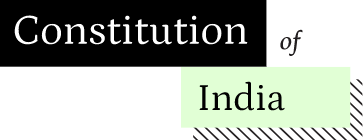Section 8 of the Government of India Act gave the Federal Centre the power to appoint its own executive organization only with regard to matters included in List I. Every Federal structure involves distribution of legislative and executive functions, powers and duties. The jurisdiction of each organ, so far as it maybe possible, has to be earmarked and demarcated. We have under our Constitution now agreed to the fundamental basis of a Federal structure. In 1935 too, when that Act was passed, a Federation consisting of provinces and States was envisaged. The powers of the Federation were defined and also those of the provinces or the States that were to form its component parts. As honourable Members are doubtless aware, three lists were prepared. List I dealt with Central subjects with regard to which the Centre had the power to legislate and to have its own agency and machinery for their execution. List II contained provincial subjects and provinces alone had the authority to pass the laws to appoint suitable agency for their administration. Besides these two, there was a Concurrent List and it is with reference to that List that this amendment has been proposed. Now the Concurrent List was essentially concerned with provincial subjects, i.e.subjects which were considered to be appropriate for purposes of legislation as well as execution of these laws by the provinces themselves. But some exception was made in order to secure uniformity in the matter of legislation where such uniformity might be considered desirable. Under the scheme of that Act–and our Constitution is modelled on that Act for the most part,–the Centre has no executive authority with regard to Concurrent subjects. It could issue directive to provinces but it could not appoint its own agents in order to execute the laws that came within the purview of List III. That is why this amendment has been moved. Thus under the scheme of the 1935 Act so far as List III was concerned, the Centre had an overriding legislative authority but it had no executive authority beyond this that it could issue directives.
